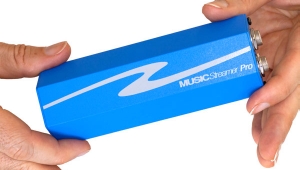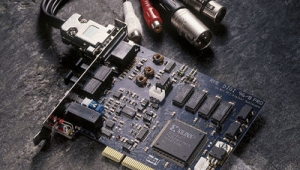| Columns Retired Columns & Blogs |
Digital Audio Labs CardDeluxe PC soundcard Manufacturer's Comment
Manufacturer's Comment
Editor: Thank you very much for your wonderful review of the CardDeluxe in September. We at Digital Audio Labs have always been proud of this product, and are very excited to have it introduced to Stereophile's readers.
I would like to take this opportunity to address a couple of the issues raised in the article.
Regarding the use of the emphasis bit, DAL has always taken the stance that the role of the soundcard is to pass audio (analog or digital) with the least possible alteration to the audio data. As such, we do not attempt to de-emphasize digital audio that has been pre-emphasized. We do allow the emphasis flag to be set for the digital output stream to allow other equipment to recognize the use of pre-emphasis. But, as JA said in the review, this is pretty much a non-issue, since we see very few (if any) recordings that are done with pre-emphasis.
The second and more major point is with the jitter measurement. The tendency when performing this type of test is to run the test waveform into the S/PDIF input and monitor the audio with the analog output. But by using this method, any jitter or noise in the CardDeluxe's S/PDIF receiver section is passed directly to the analog output. The best way to see the actual performance of only the analog output is to first record the waveform being used to a soundfile, then play that file back through the analog output, which uses the internal clock, to take the measurement. (Of course, this requires a windowing function on the FFTs, since the CardDeluxe and the measurement unit will no longer have synchronous clocks.)
I believe that if you perform the measurement in this manner, you will see tremendous jitter performance. [See my Follow-Up in this issue.—Ed.] I hope you are able to take the time to try this. While we feel that the performance of our digital input section is quite good, its stability on recovering the incoming clock isn't nearly as good as the onboard oscillators that generate the internal clock. We always advise our customers to use the internal clock for any critical listening or playback.—Al Pickard, President, Digital Audio Labs
- Log in or register to post comments

































